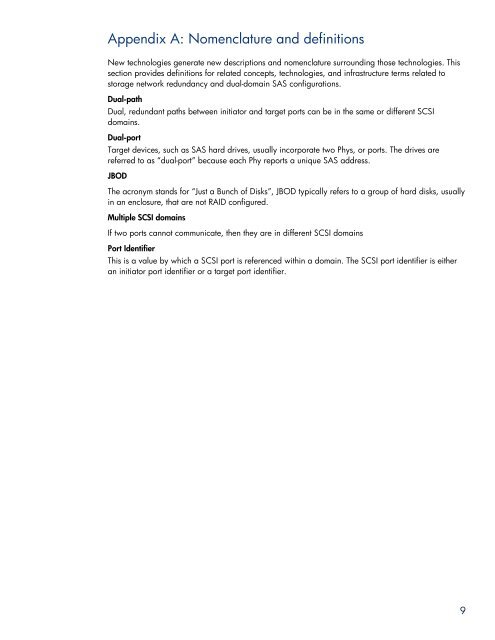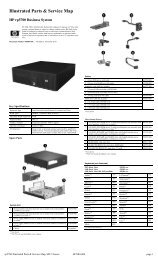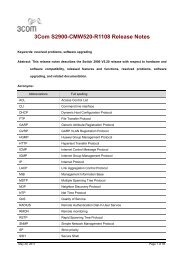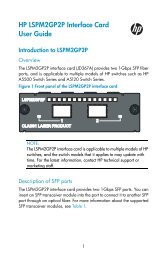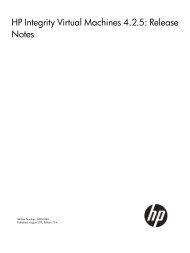Redundancy in enterprise storage networks using dual-domain SAS ...
Redundancy in enterprise storage networks using dual-domain SAS ...
Redundancy in enterprise storage networks using dual-domain SAS ...
You also want an ePaper? Increase the reach of your titles
YUMPU automatically turns print PDFs into web optimized ePapers that Google loves.
Appendix A: Nomenclature and def<strong>in</strong>itions<br />
New technologies generate new descriptions and nomenclature surround<strong>in</strong>g those technologies. This<br />
section provides def<strong>in</strong>itions for related concepts, technologies, and <strong>in</strong>frastructure terms related to<br />
<strong>storage</strong> network redundancy and <strong>dual</strong>-doma<strong>in</strong> <strong>SAS</strong> configurations.<br />
Dual-path<br />
Dual, redundant paths between <strong>in</strong>itiator and target ports can be <strong>in</strong> the same or different SCSI<br />
doma<strong>in</strong>s.<br />
Dual-port<br />
Target devices, such as <strong>SAS</strong> hard drives, usually <strong>in</strong>corporate two Phys, or ports. The drives are<br />
referred to as “<strong>dual</strong>-port” because each Phy reports a unique <strong>SAS</strong> address.<br />
JBOD<br />
The acronym stands for “Just a Bunch of Disks”, JBOD typically refers to a group of hard disks, usually<br />
<strong>in</strong> an enclosure, that are not RAID configured.<br />
Multiple SCSI doma<strong>in</strong>s<br />
If two ports cannot communicate, then they are <strong>in</strong> different SCSI doma<strong>in</strong>s<br />
Port Identifier<br />
This is a value by which a SCSI port is referenced with<strong>in</strong> a doma<strong>in</strong>. The SCSI port identifier is either<br />
an <strong>in</strong>itiator port identifier or a target port identifier.<br />
9


